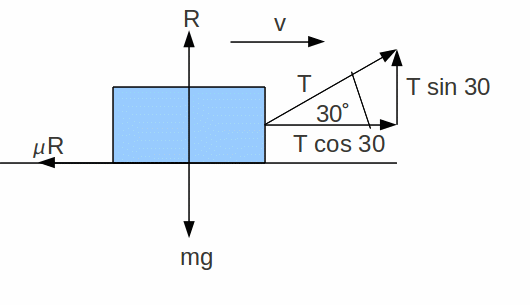If a particle is moving at constant velocity then there is no net force acting in any direction.
We can resolve vertically and horizontally, forming simultaneous equation to find the unknown forces.
Example:
A heavy crate, of mass 200 kg, is pulled along a rough horizontal surface at a constant speed by a
rope. The rope is at an angle of 30° to the horizontal. The tension in the rope is T newtons.
The coefficient of friction between the crate and the surface is 0.6. Model the crate as a particle.

We draw a diagram showing all the forces acting.

We can now resolve vertically to obtain
![]()
![]() (1)
(1)
and horizontally to obtain
![]()
![]() (2)
(2)
![]() gives
gives
![]()
Then from (2)![]()
